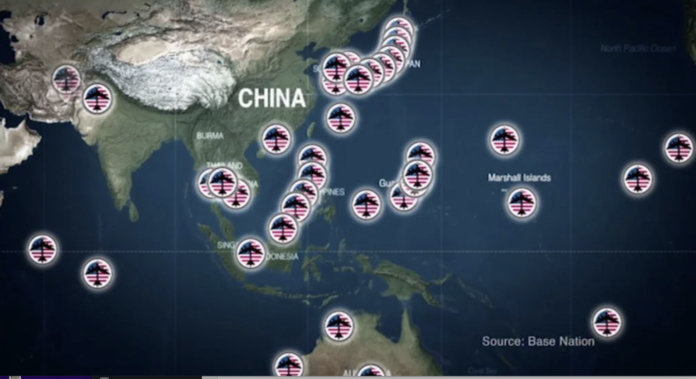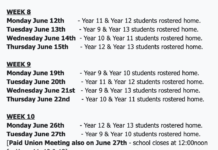Australia publishes Defence Strategic Review
Australia published its Defence Strategic Review and the Albanese’s governments response. This report provides a clear statement of Australia’s concerns about longer-term security in the Pacific region. The report states: “The region has seen the return of major power strategic competition and the intensity of which should be seen as the defining feature of our region and time.”
Further, the report clearly identifies Australia’s concerns about China stating: “China’s military build-up is now the largest and most ambitious of any country since the end of the Second World War. This build up is occurring without transparency or reassurance to the Indo-Pacific region of China’s strategic intent.”
The report signals some major changes in Australian defence thinking including the following points:
- Projection of military power to deny a potential enemy bases to operate from. A war in the Pacific involves maritime and air assets; both of which need bases. The review; and recent Australian policy decisions demonstrate a plan for denying bases to a potential enemy using ‘force projection’ and precision-strike based ‘area denial.’
The AUKUS submarines are an example of naval force projection. A powerful naval asset able to deny areas of ocean and sea communication to a hostile power far from Australia’s shores. AUKUS submarines can deploy for long periods in far away locations; using their long-range Tomahawk missiles to dominate huge areas of ocean effectively stopping the movement of enemy vessels, troops and supplies.
And; the review discusses prioritising long-range precision missile systems like HIMARs over armoured vehicles and conventional artillery in the Australian Army. The aim being that Australian ground forces can deny large areas of land; or distant islands to an adversary. For instance, a force based in Honiara with a 500km range precision-strike capability would be able to deny almost all the Solomon Islands chain to an adversary.
- Australia is signalling that its focus is to the north and that it intends to fight at distance. Australia is keen to provide strategic depth by engaging an enemy as far to the north as possible. Depth is essential because modern long-range precision missiles enable an enemy force based in Timor, Papua New Guinea, Solomon Islands or Vanuatu to attack the Australian mainland. Therefore, Australia aims to use ‘force projection’ to try and keep conflict at a distance.
Nuclear submarines and long-range missiles are part of the plan; providing naval force projection. However, within the wider concept of operations there is also a focus on deployable forces. Soldiers and small naval vessels based in the north that can rapidly deploy along Australia’s coast or to areas further north. The attached defence notes saying that Australia’s army must be “optimised for littoral operations in our northern land and maritime spaces and provide a long-range strike capability.” In plain language, this means Australia will focus on being able to fight in small teams amongst the archipelagos of the Pacific. It signals a focus on small warships and light weight ground forces able to operate independently that in conventional war would be the ‘eyes’ for long-range precision guided missiles. Another task in conventional war would be finding and destroying the enemy’s observers.
This type of force is also useful for supporting smaller nations contributing to regional security; by preventing a hostile nation from using political instability to put their troops (or proxies) on strategically important ground.
Further, the report also highlights air defence as a key capability for protecting deployed forces from enemy aircraft and missiles.
- Asymmetric advantage. This term is used to describe the AUKUS alliance’s technology advantage. Specifically, its ability to use inter-operable digital networks. Australia is committed to working with its AUKUS partners to retain this technology advantage; the ability to communicate information securely and instantaneously between allies. Or; in practical terms that an Australian soldier can spot a target, then use an American cruise-missile fired hundreds of kilometres away to destroy it. Deployment of an integrated digital network that allows this to happen takes time, training and money.
- Collective security and economic collaboration. The review states war is not inevitable and that by working together Pacific nations can manage Sino-American competition. This is an indicator that Australia intends to become more active in the region building military and economic alliances, aiming to prevent China achieving diplomatic footholds that could provide future bases. It is likely that its AUKUS partners will also be working hard to build their influence in the region.
The report stresses the need for Australian industry to work more closely with defence partners and provides a plan for sharing industrial information. It also signals an Australian commitment to development of a higher tech defence industry able to build advanced systems like drones and missiles locally.
Australia is a key regional power and this report clearly defines both its assessment of its key military threat; and how it intends to address that threat. Including a commitment to working with the United States. Pacific nations, particularly Australia’s ally New Zealand need to understand that as AUKUS develops pressure to commit to the growing network of Australian and United States defence alliances in the Pacific will increase.
Philippines, South Korea, Japan, Thailand, Australia and the United Kingdom are all ‘allies’ of the United States (i.e. the United States is committed to protect these states and their interests) active in the Pacific. Working together to develop better inter-operability and bring their militaries closer together to deter Chinese; Russian or North Korean aggression.
Countries that do not commit to these collective security arrangements lose influence over Australian and United States activities in the Pacific; and will need to accept the risk that their interests will not be protected. If tensions continue to increase both China and the United States will exert more pressure on Pacific nations to align themselves.
Exercise Balikatan 2023
This month the United States and the Philippines conducted their largest ever exercise; Exercise Balikatan 2023. The exercise involved 17,000 service personnel and was concentrated around the Batanes archipelago, about halfway between the Philippines and Taiwan.
The exercise included naval, air and land forces and tested new concepts like using small dispersed groups from United States, Littoral Marine Regiments to infiltrate a Chinese ‘weapon effect zone.’ A tactic that is developing as a counter to China’s large number of precision-guided long-range missiles.
The size, scale and timing of this exercise are clearly designed to send a clear message to China that the United States and its allies are prepared to defend Taiwan. In any future conflict the Philippines will serve as an important United States base area. And; with regards to a potential invasion of Taiwan the Philippines provides bases for the United States to secure the southern approaches to the island. The Batanes archipelago provides a series of bases to block Chinese movement out of the South China Sea and are also close enough to support a land battle on Taiwan.
Meanwhile in the South China Sea
Chinese and Philippine’s coast guard ships continue their dangerous game of ‘cat and mouse’ in the South China Sea. This week the action was around the Spratly Islands, a small group of tiny islands that China, Taiwan, Philippines and Vietnam each claim either all or part of and that are being occupied by their claimants.
Ownership of the islands allows a nation to claim territorial rights to a larger portion of the South China Sea’s fishing grounds.
The continuing activity and clashes between the Philippines and China are a good example of hybrid war. In this case, the Philippines has laid claim to an area called Second Thomas Shoal; and has a small force of soldiers living in a ship moored on the shoal to enforce the claim. China uses para-military forces like its coast guard and police to conduct aggressive military style operations that prevent re-supply; essentially besieging the Philippine garrison. China’s coast guard uses larger, more powerful ships to intimidate Philippine’s vessels physically blocking their movement.
The claim is that this physical aggression is a ‘police action’ and that China’s civilian police forces are exercising a legitimate right to control their exclusive economic zone. Except that not many police or coast guard forces operate such large well-armed and equipped vessels or use such aggressive tactics. Tactics that include shadowing and menacing foreign fishing vessels and the deployment of armed guards on Chinese fishing vessels. Further, China’s claim is disputed in international law so such ‘police actions’ lack an internationally recognised legal mandate.
Essentially, China is using physical aggression disguised as policing to deter escalation and to physically force other countries out of an area that is legally contested; banking on the idea that ‘possession in is 9/10ths of the law’. None of which stops China using diplomatic and legal means to enforce the claim. A hybrid mix of physical, legal and propaganda tactics all designed to capture territory without providing competitors with a mandate for military escalation.
And; if tensions continue to increase in the Pacific we can expect to see more hybrid war of this nature as larger nations seek to gain access to natural resources or to strategically located areas of land. A way to prevent this type of activity is by using collective security alliances to enforce the rule of international law. A good argument for smaller nations to carefully consider their commitments to alliances and military partnerships in the region that support international law and a rules-based order.
Ben Morgan is a bored Gen Xer and TDBs military blogger





The increasing support by the Australian regime for the extermination of the Chinese people provides an opportunity for New Zealand. There’s never been a better time to acquire protection against Australian and American aggression. We could easily base missiles to target the bases that the Australians host for their war of race-hatred towards all Chinese people.
Either Mohammed is so recently arrived in NZ that he has not yet cleared customs coupled with he came armed with with absolutely zero understanding of NZ or in a wider sense the Western world or he is an idiot.
So NZ bases missiles to target a country in which almost every Kiwi has family or at the very least mates living . . slept right through Anzac day did you Mohammed?
Indonesia and Australia is crucial to New Zealands security. Any attack on them is an attack on all of us.
Interesting article by John Pilger on the same theme – Offers a slightly different view and worth a read
https://scheerpost.com/2023/05/01/john-pilger-the-coming-war/
I’d urge anybody on the side of peace to read Pilger.
Ben says, “Philippines, South Korea, Japan, Thailand, Australia and the United Kingdom are all ‘allies’ of the United States (i.e. the United States is committed to protect these states and their interests)
The USA does not protect the interests of anybody but themselves, full stop. If that coincides fine, but the US doesn’t give vassal states wriggle room. For example, “Germany, toe the line… whoops, no more Nordstream”.
Ben then closes, “to deter Chinese; Russian or North Korean aggression.
I don’t see Russia floating around threatening NZ, doing anything malign around here, except perhaps being part of a trading block that threatens US$ hegemony…. perhaps we should join too. Ditto China, our major trading partner. I do see the US abandoning the One China policy, creating an imperial colony out of Taiwan, and militarising the South China Sea. Conversely I haven’t seen Chinese ships off California or declarations that Hawaii is not part of the US.
Exactly who is the aggressor here?
Ourselves. Having a global footprint requires a global security reach. We’ve lived through a time where America was the largest economy and theyqqq1
Rules based orders? who’s rules and based on what order? Quoting international law when the US UK and Aus have breached many of these treaties and still do to this day, has me sheathing with outrage .
The US troops illegally occupying Syrian Oil and wheat fields right now is a breach of International law. The UK incarcerating a journalist for 4 years under duress in a maximum prison for breaching bail is a breach of international law. The Australian govt detaining refugees on an Island with no rights is a breach of international law.
This western standards of moral high authority is nothing but a mirage sugarcoating it’s racist past of dispossession by blaming the people that it has colonized (a crime against humanity) The writer assumes that AUKUS is this benign military apparatus that has our best interest at hand but viewed more carefully it’s an attempt to challenge China growing influence in our region. China isn’t our enemy its the prevailing myth that the west needs to be in control of countries that itself has made vulnerable and dependent patriarchally.
The Taiwan issue should be an easy fixit geopolitical strategy. Firstly acknowledge the ‘One China Policy’ recognized by the USA, and most countries around the globe. The current President of Taiwan ‘Tsai Ing-wen’
is coming up for re-election 2024 and by what being mentioned in Taiwan society is she isn’t that popular and could be ousted which would help resolve a lot of the tension generated by her administration egged on by the US.
Most sound minded individuals of the AUKUS countries plus the pasifika communities and NZers don’t want a NATO style military scenario like that happening in Europe. We want to be able to live peacefully and trade, with whomever and abide by international law and not subjected to this ‘rules based order’ banded around like a pornstar doing a gangbang scene by this particular writer.
Our rules & our orders. Freedom & democracy.
Freedom isn’t free at all. If I have the biggest gun. Then I have freedom and you don’t.
New Zealand is just an adjunct of our 5eyes overlords. We have no independence.
The AUKUS subs represent half Australia’s defence budget. Half! They’re building a freaking Death Star. SMH
“An island is a land mass surrounded by submarines”
US submarine service motto
Comments are closed.